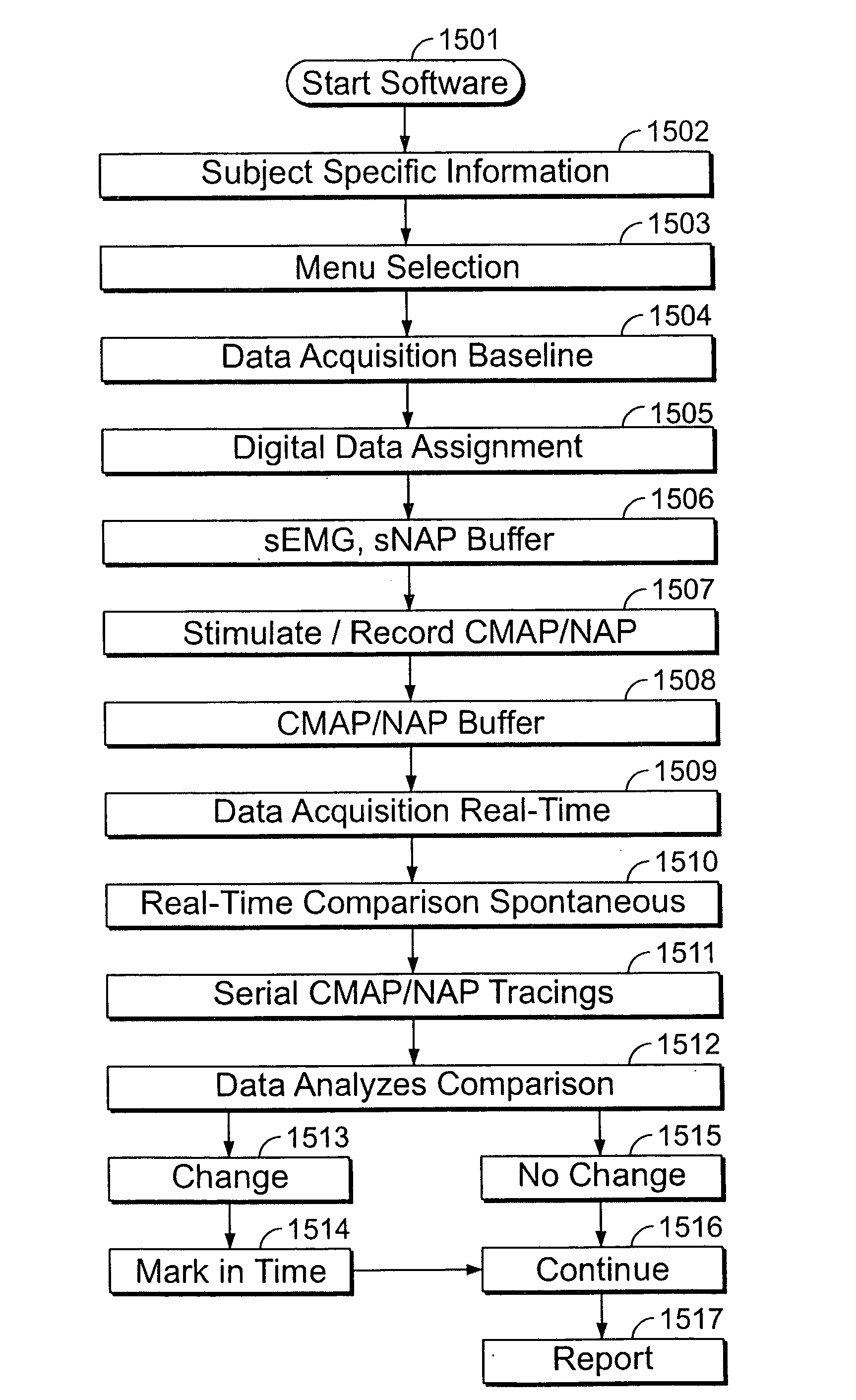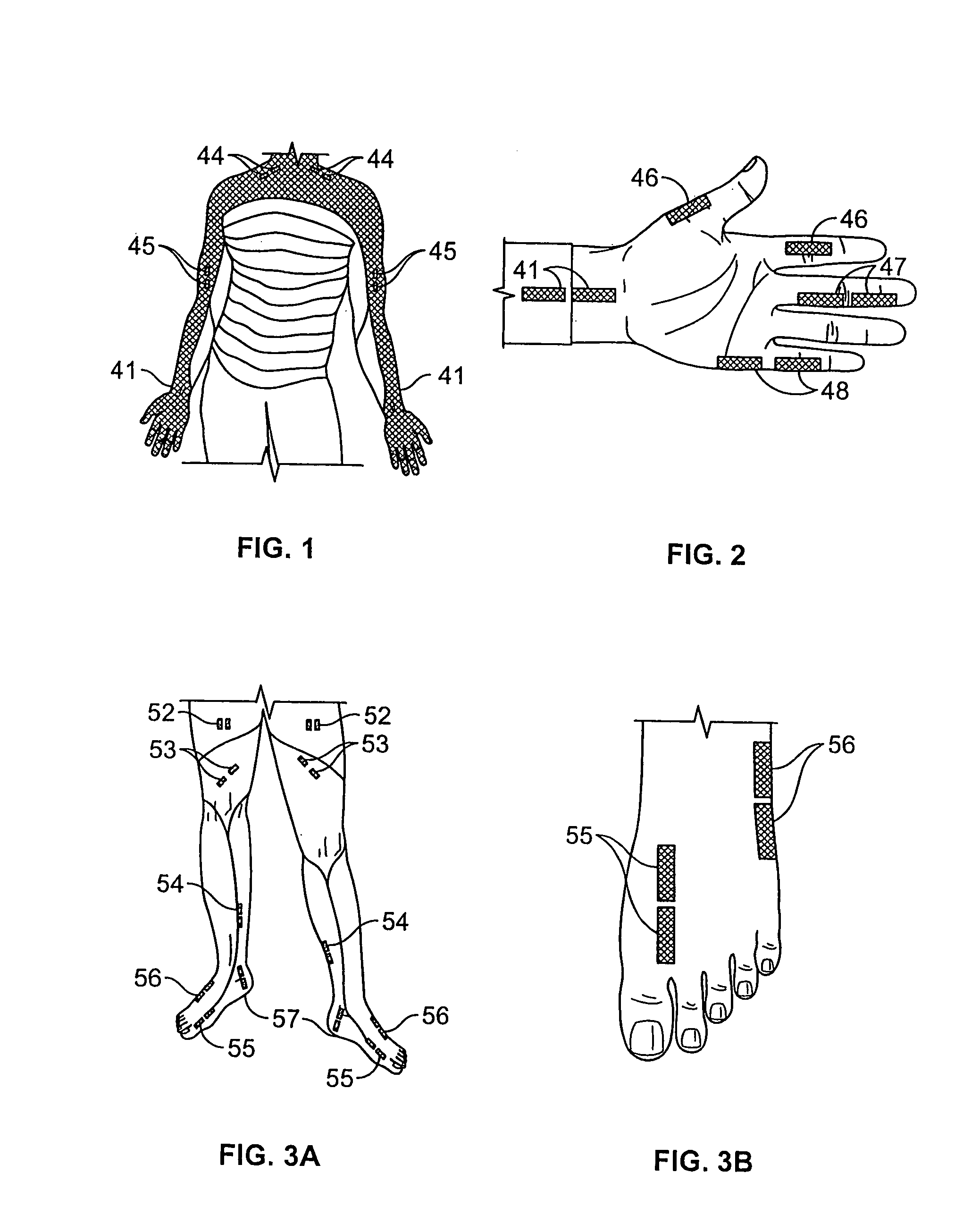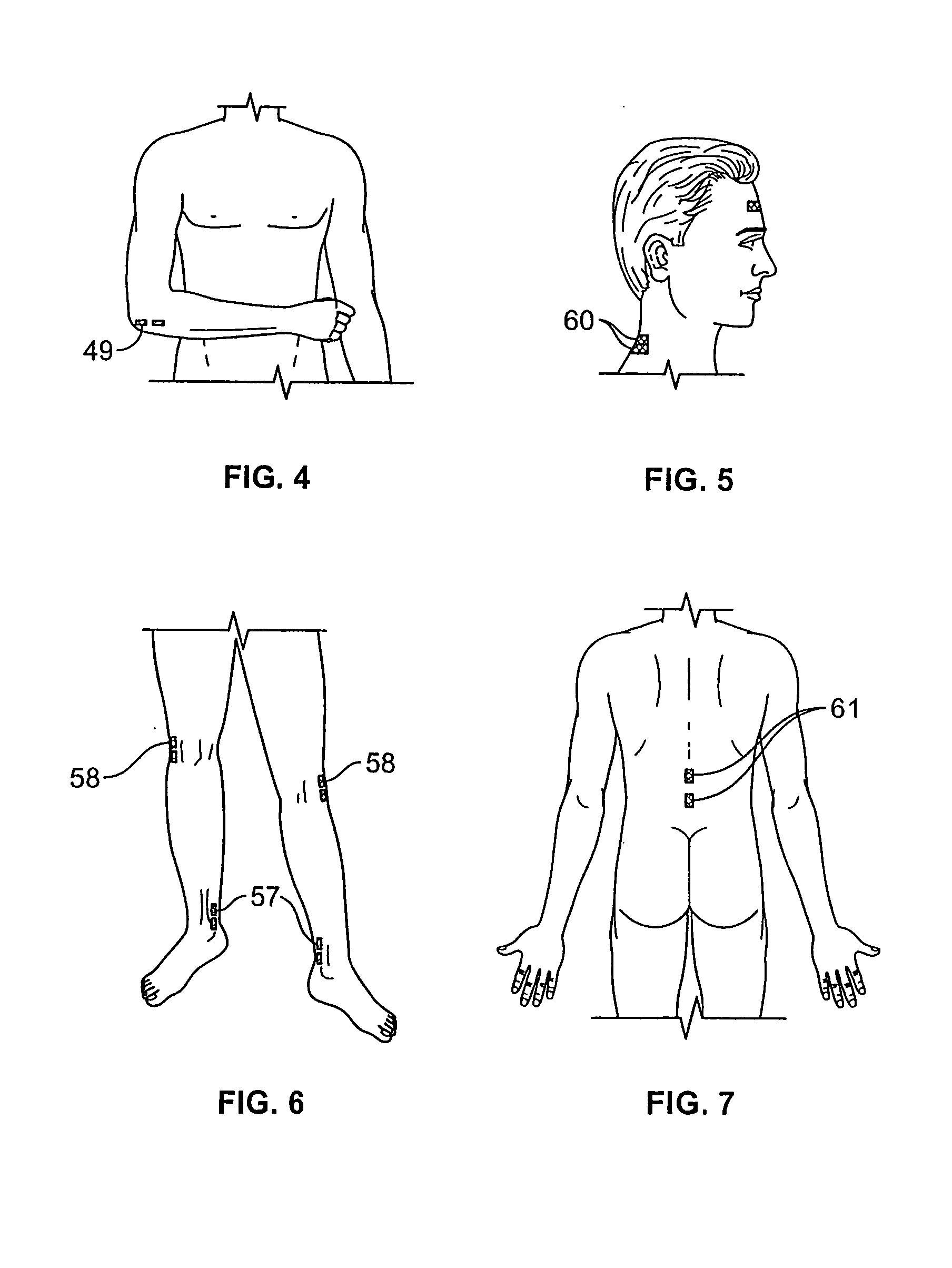Methods & systems for intraoperatively monitoring nerve & muscle frequency latency and amplitude
a technology of frequency latency and amplitude, applied in the field of neurology, can solve the problems of difficult to obtain the physiological representation of specific nerve root function, the use of specific dermatomal evoked potentials (dssep), and the technical demands of techniques
- Summary
- Abstract
- Description
- Claims
- Application Information
AI Technical Summary
Benefits of technology
Problems solved by technology
Method used
Image
Examples
example 1
[0089]The invention provides a multichannel neurophysiologic monitoring system and protocol to intraoperatively assess an at risk nerve function, such as for example, the sciatic nerve during a RTHA surgical procedure. To address the incidence of occurrence of post-operative nerve palsy or damage, the inventive multichannel channel neurophysiologic monitoring system may be used to assess at-risk nerve function during a surgical procedure, spontaneously elicited electromyography (sEMG) and mechanically elicited (mEMG), electrically elicited compound motor action potential (eCMAP), and electrically elicited nerve action potential (eNAP) and spontaneous nerve action potential (sNAP) is interpreted in real-time during surgical exposure of the at risk nerve. The surgical approach is redirected until all firings subside spontaneously.
[0090]In an exemplary mode, where the sciatic nerve is at risk, sEMG, mEMG and eCMAP is recorded from musculature such as for example, the quadriceps, tibial...
example 2
[0097]The described monitoring methods and systems are readily adapted for assessing sciatic nerve function segmentally during a revision total hip arthroplasty (RTHA) surgery in which the sciatic nerve is an at-risk nerve. In an operative site where visualization of an at-risk nerve such as the sciatic nerve is difficult or impossible, elicited responses are used to locate the nerve, and monitor its integrity and function serially throughout the procedure. During and throughout the procedure, the sciatic nerve is serially located and serially electrically stimulated with a bipolar wand for monitoring of the functionality of the nerve.
[0098]A baseline spontaneously occurring electromyography (sEMG), and a baseline spontaneously occurring nerve action potential (sNAP) are recorded in the subject undergoing a RTHA surgical procedure. The firing rate, or frequency, of the spontaneous activity is converted to digital data for subsequent comparisons. The baseline data can be obtained fro...
PUM
 Login to View More
Login to View More Abstract
Description
Claims
Application Information
 Login to View More
Login to View More - R&D
- Intellectual Property
- Life Sciences
- Materials
- Tech Scout
- Unparalleled Data Quality
- Higher Quality Content
- 60% Fewer Hallucinations
Browse by: Latest US Patents, China's latest patents, Technical Efficacy Thesaurus, Application Domain, Technology Topic, Popular Technical Reports.
© 2025 PatSnap. All rights reserved.Legal|Privacy policy|Modern Slavery Act Transparency Statement|Sitemap|About US| Contact US: help@patsnap.com



